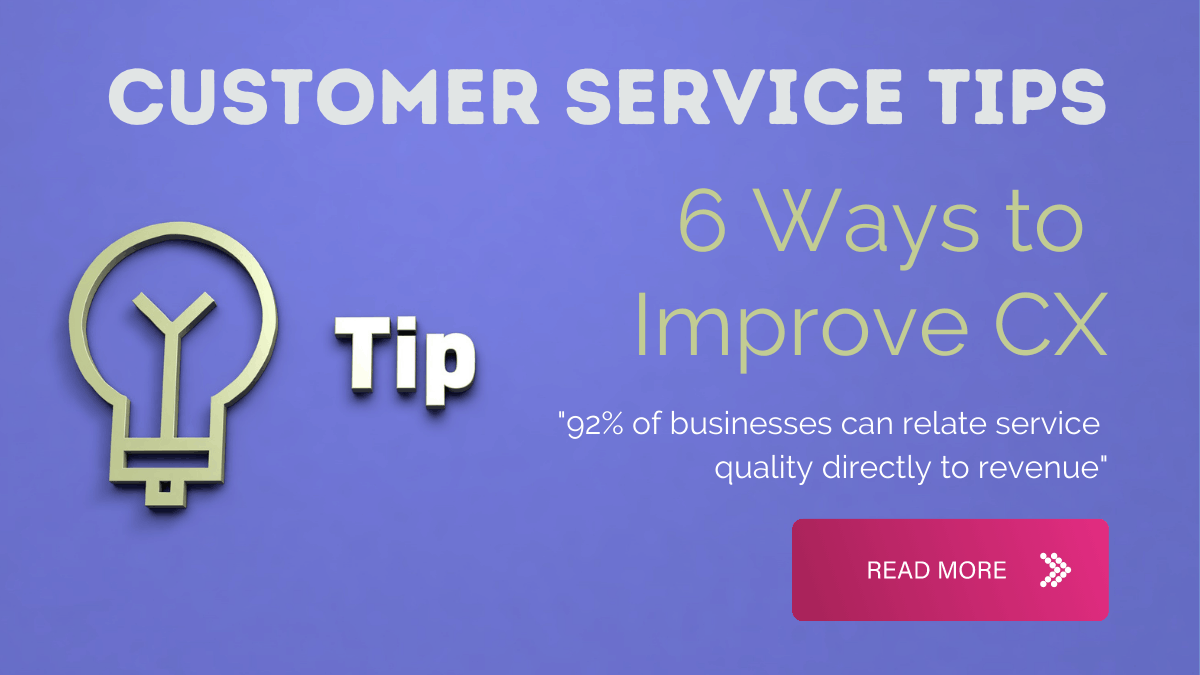When you ask people what influences their choice of brand, one factor always comes out on top: customer service.
As the front line between your company and customers, contact centers are key to fostering this loyalty. This article will explore six easy-to-implement call center customer service tips to improve your support.
6 easy-to-implement call center customer service tips
#1 Reduce hold time with virtual queuing
It’s no secret that customers hate waiting on hold.
70% of people find it extremely frustrating, and the majority of customers say they will hang up if they don’t get through to an agent in two minutes.
Anything you do to reduce hold time will make a huge difference to the customer experience.
Offering self-service support will help, as will hiring more reps. An underused strategy is to implement a virtual queuing system.
Here’s how it works:
When customers call your contact center, your system automatically places them in a virtual queue.
They can then hang up and go about their day. When an agent becomes available, they call the customer back.
The great thing about virtual queuing is that you can choose your callback criteria based on what works for your business.
This could be:
- Agent availability
- Scheduled time slots
- Call volume
What’s more, you can use your IVR to collect information about the problem when the customer calls.
This means agents are better prepared when they make the callback.
Virtual queuing is an idea that three out of four customers say they find highly appealing.
And it’s easy to build an automated virtual queuing system at your contact center by integrating your dialer and CRM using No-Code technology.
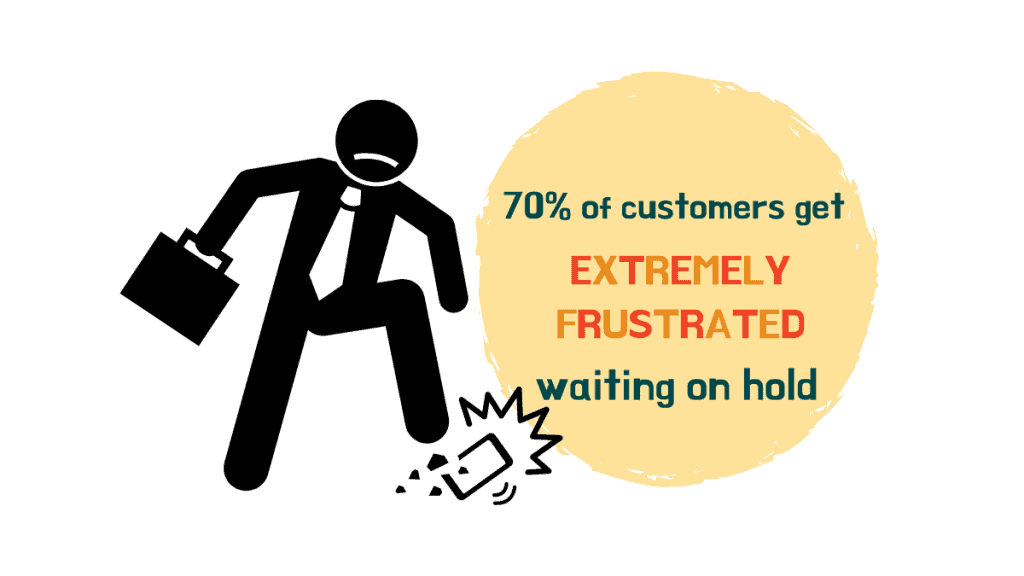
#2 Don’t use irritating hold messages
We mentioned above that customers dislike waiting on hold. But sometimes it’s inevitable.
You can improve the experience by carefully considering the messages customers have to listen to.
For example, people tend to dislike empty statements. 47% say they dread hearing some form of the message “We value your call.” While 28% say they dislike being told that they can find more information on a website.
But customers appreciate messages with information about their place in the queue or how much longer they have to wait.
Switching your message is an easy fix, but one that positively impacts CX. There’s no reason not to do it.
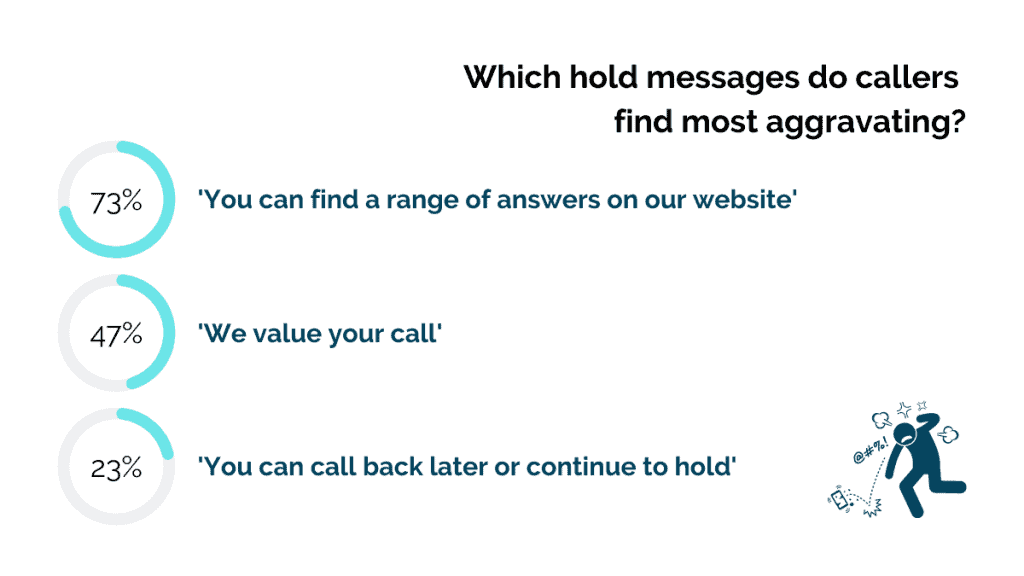

#3 Use self-service to let customers help themselves
Customers say that the number one thing they look for in support is the ability to resolve issues quickly.
Number two is that the support is available in real-time.
Self-support helps you fulfill both these criteria.
You can offer many types of self-service support and digital service. But the key tool in contact centers is your IVR.
Setting yours up correctly helps your customers get fast answers to simple problems.
Here are some ways businesses use this technology:
- Banks let customers check their balance on the go
- Ecommerce stores let customers access order updates
- Delivery companies provide order information
IVRs have a mixed reputation among customers – partly driven by awkward-to-use legacy systems.
So you must ensure the experience of using your IVR is a good one.
This means *not* making customers listen to long lists of irrelevant options.
Using a conversational IVR instead of a traditional Dual Tone Multi-Frequency IVR will help.
These modern solutions use conversational AI and Natural Language Understanding (NLU) technology to decipher the meaning of phrases and provide relevant responses.
Instead of listening to a list of options and then selecting the right one, your customer states their problem and the IVR finds a solution.
Self-service support doesn’t just benefit customers. Your team gets the advantage of having fewer calls to deal with, so they can focus on more challenging requests.
And you benefit from the fact that solving tickets via self-service support is far cheaper than doing so via agent-led support.
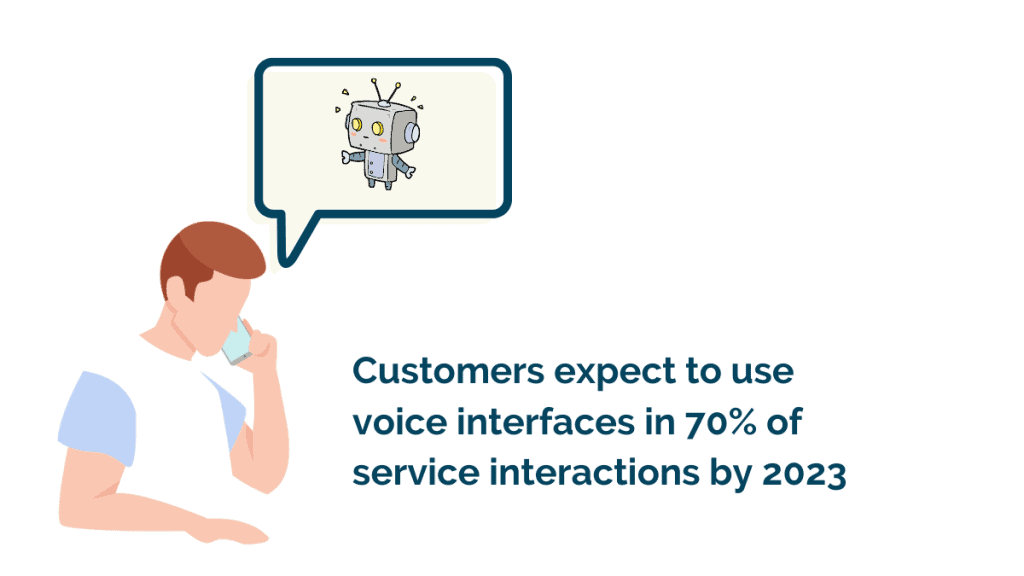
#4 Bridge the skills gap of new agents with NLU
Key to providing a great customer experience is ensuring all agents know how to do so. But new agents aren’t as skilled as more experienced ones.
Good employee onboarding and training help bring them up to speed. But you should also consider using NLU technology to give agents tips and reminders during calls.
Here’s how it works:
- NLU technology listens to calls in real-time.
- It makes on-screen suggestions or provides reminders to agents about certain tasks.
Imagine a customer discussing their account. The technology can listen to what is being said and remind agents to update account information.
Or, it can monitor the call for potential sales or upsell opportunities and alert agents.
The result is that all agents in your team can provide great customer service.
You can read more about how to use NLU as a powerful agent productivity tool here.
#5 Be proactive with call center customer service
Solving customer problems quickly is great. But a better solution is to ensure customers don’t have to contact you in the first place.
Offering proactive and preemptive service can help. This is when you anticipate potential problems and ensure customers have the information they need to solve them before they occur.
Here are two real examples of it in practice.
AT&T found that new customers often called contact centers with questions about their first bill.
To stop this, the business sends a personalized video that explains each charge on the first invoice.
Anglican Water sends automated text messages to customers alerting them to water outages when or before they occur.
Customers don’t have to contact the company, and they can better prepare for the outage.
This type of proactive service is easily automated.
You don’t need to send a message to each individual customer. Just identify potential problems and create processes that provide relevant support when needed.
For example, you could send an automated SMS with further details about a common customer issue following a call.
Proactive service has several advantages. Research suggests it can increase retention by 3% to 5%.
But the largest benefit is the impact it can have on call volume. Because customers don’t need to contact your call center, it can reduce volume by as much as 30%.
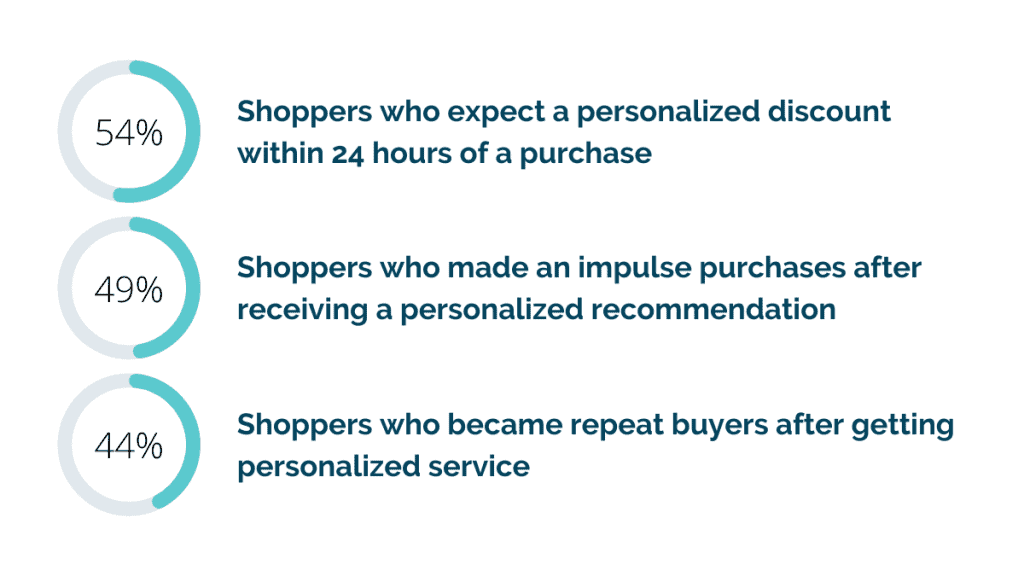
# 6 Track the right metrics
There are (rightfully) lots of tips out there telling you to measure the quality of your support.
But this only works if you track the right metrics.
Take Average Handling Time. Many contact centers focus on making this as low as possible.
The idea is that because customers want fast answers to their questions, contact centers should do all they can to reduce this number.
But, putting too much of a focus on Average Handling Time can lead to other issues.
For example, short calls may result in callbacks if your agents don’t solve problems sufficiently.
Consider measuring other metrics alongside your Average Handling Time.
For example:
- First Contact Resolution shows the percentage of customer queries that you solve in a single response.
- Call Transfer Rate is the percentage of calls that get transferred from one agent to another.
None of these metrics is 100% effective at showing how good your service is.
But by measuring multiple factors you can improve your understanding of the service you provide.
The key to acting on this data is having the ability to quickly implement improvements.
No-code technology can help. It allows you to integrate all the tools you use in your contact center and then build automation between each one.
It’s easy to spot a problem and then put a solution in place.

